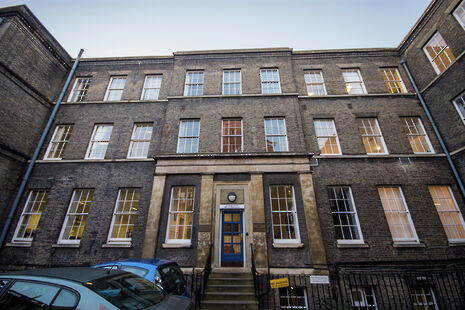From Trinity to Peterhouse: a decade of disaffiliation referenda
With a disaffiliation referendum underway at Peterhouse, Matt Gutteridge takes a look back over referenda of Cambridge past

The upcoming Peterhouse referendum is far from the first affiliation-based vote in Cambridge. The history of college referenda goes back more than a decade to the controversy surrounding then-CUSU President Laura Walsh. Following a tied no-confidence vote in Walsh’s leadership, several colleges held votes on their affiliation with CUSU. Emmanuel, Jesus, and St John’s all voted to remain, while only Trinity voted to leave, by the wafer-thin margin of six votes.
The very next year, however, Trinity reaffiliated to CUSU, in a vote that just 20 students participated in. Despite CUSU claiming the result was “important for Trinity students,” Varsity at the time reported “absolute apathy” from the student body, with many completely unaware that a vote was taking place as a result of the vote being called with less than 72 hours notice.
Indeed, this week’s vote is not even the first time Peterhouse has voted on CUSU affiliation. Concerns over value for money, a theme of the current disaffiliation campaign, triggered a referendum in 2009, but the vote, held during a JCR meeting, resulted in no votes in favour of disaffiliation, an exercise described as “a good idea for democracy in the college” by then-Peterhouse JCR President Joe Ruiz.
In 2010, both the JCR and MCR of Corpus Christi College held referenda on CUSU affiliation. At an open meeting of the Corpus Christi JCR, one speaker claimed that “CUSU talks a lot but does nothing significant.” The result was overwhelming, with 71 per cent of undergraduates and 86 per cent of postgraduates choosing to opt out.
Despite concerns about access provision outside CUSU, in 2012 Robinson College held its own vote on CUSU membership. Despite the campaign of former JCR chair Ewan McGregor, who described those who wanted to reform CUSU as having a better “chance of wearing down the college with a toothbrush”, the college voted to remain affiliated.
In 2013, Selwyn College voted narrowly in favour of remaining affiliated. Shortly after, Gonville & Caius College became the second college to disaffiliate from CUSU. 70 per cent of participants in the vote, which was open to both the JCR and MCR, voted to leave CUSU, and the 36 per cent turnout comfortably cleared the quorum of 12 per cent set by the JCR.
Ted Loveday, who would go on to achieve fame as a member of the college’s victorious University Challenge team in 2015, said at the time: “I think this is a powerful decision, since it will send CUSU the message that they need to justify their existence.”
Controversy broke out over CUSU membership at Fitzwilliam College in 2014, as the frustration of the JCR spilled over into the minutes of an official meeting, which reported: “CUSU said they’d send an informative handbook, but hey, CUSU say a lot of things,” and called on CUSU to “put that in your pipe and smoke it.” In an open meeting, however, the student body decisively rejected a referendum on affiliation, and no vote was ever held.
The most recent college to hold a referendum was Churchill College, in October 2015. The JCR held a heated debate in advance of the referendum, where last year’s CUSU President Priscilla Mensah blasted coverage of CUSU’s financial mismanagement as “verging on libellous”. In the end, more than 80 per cent of students voted to remain.
This weekend’s referendum is nothing new in the world of Cambridge student politics. Past evidence, too, suggests that it is unlikely that the disaffiliation campaign will be successful. However, given the controversy surrounding CUSU in the past year, if Peterhouse do decide to opt out, it is likely that other colleges will follow suit in holding their own votes.
Matt Gutteridge
 News / Downing investigates ‘mysterious’ underground burial vault 29 December 2025
News / Downing investigates ‘mysterious’ underground burial vault 29 December 2025 News / Unions protest handling of redundancies at Epidemiology Unit30 December 2025
News / Unions protest handling of redundancies at Epidemiology Unit30 December 2025 Lifestyle / Ask Auntie Alice29 December 2025
Lifestyle / Ask Auntie Alice29 December 2025 Features / ‘Treated like we’re incompetent’: ents officers on college micromanagement30 December 2025
Features / ‘Treated like we’re incompetent’: ents officers on college micromanagement30 December 2025 Science / Astronomical events to look out for over the break29 December 2025
Science / Astronomical events to look out for over the break29 December 2025









